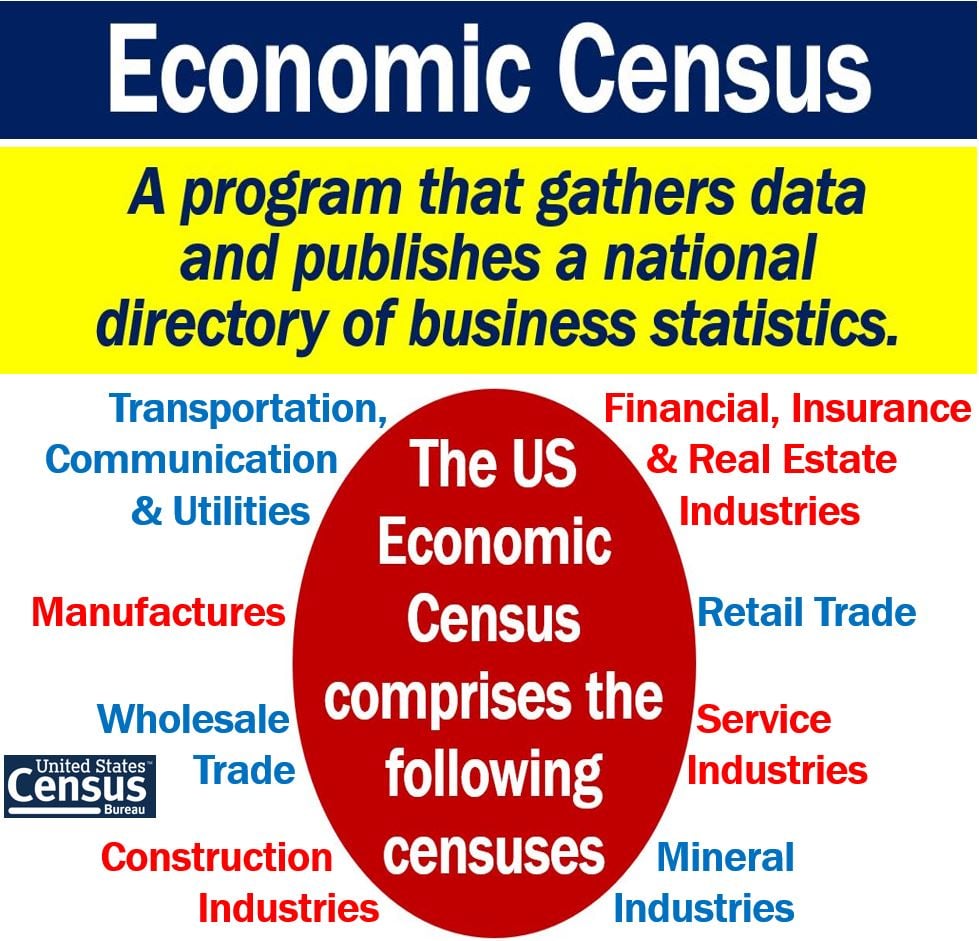What is an economic census? Definition and examples
An economic census is a program that some countries have in which they publish a directory of national business statistics. In most countries, the authorities carry out an economic census every five years. They carry out the census at local, regional, and national levels. During a census, they gather valuable information about employers, employees, sales, receipts, and shipments.
The American one, for example, occurs once every five years. In India, on the other hand, the interval between each census varies.
The First Economic Census in India was in 1977, its Second in 1980, its Third in 1990. India’s Fourth, Fifth and Sixth Economic Censuses took place in 1998, 2005, and 2013 respectively.
BusinessDictionary.com says the following regarding the US economic censuses:
“The economic census is conducted every 5 years on a local to national level to provide valuable data concerning sales, receipts, shipments, employers, and employees.”

According to the US Census Bureau: “The key statistics produced for the Economic Census include Total Number of Establishments; Value of Sales, Shipments, Receipts, Revenue; Primary Business Activity; Number of Employees; Total Annual Payroll; Total First Quarter Payroll; and industry specific statistics.”
United States Economic Census
The US Economic Census is an official five-year measure of US business and the national economy. The US Census Bureau carries out the census. By law, if you get a form, you must fill it in, i.e., response is compulsory.
The Census Bureau sends out forms to four million businesses every five years. Small, medium, large, and giant companies receive the forms. They are a good representative sample of all American companies.
Participants must provide a range of performance and operational data.
Policymakers in national, regional, and local government use the census data when making strategic planning decisions.
Wikipedia says the following regarding US Economic Censuses:
“The Economic Census, together with the separately conducted censuses of agriculture and governments, covers virtually the entire economy, excepting only for forestry, agricultural support, rail transportation, and employment by private households.”
USA – brief history
Business and economic censuses have existed in the United States for over two hundred years. In 1810, the first census of manufactures occurred.
The US Census Bureau writes:
“From black-smithing to robotics, from muskets to lasers, from an agrarian economy to one increasingly based on services, the Census Bureau and its predecessors have measured our economic activities since the first census of manufactures in 1810.”
As the economy grew and became more sophisticated, the censuses began to include wholesalers and mining concerns. Subsequently, there was a constructions industries census. Wholesalers are companies that buy goods in bulk and sell them in smaller batches to retailers and other businesses.
It was not until 1954 that America had what economists call ‘a fully integrated census.’ That year was also the first time census organizers used an electronic computer (UNIVAC 1) to process data.
The Census of Transportation began in 1963. In 1987, transportation data became more sophisticated and included many different transportation industries.
The final major expansion of America’s Economic Census occurred in 1992. In that year, the organizers added more data from transportation industries as well as finance. They also included information on insurance companies, real estate, communications, and utilities.
In this article, ‘utilities’ refers to providers of water, natural gas, or electricity.

